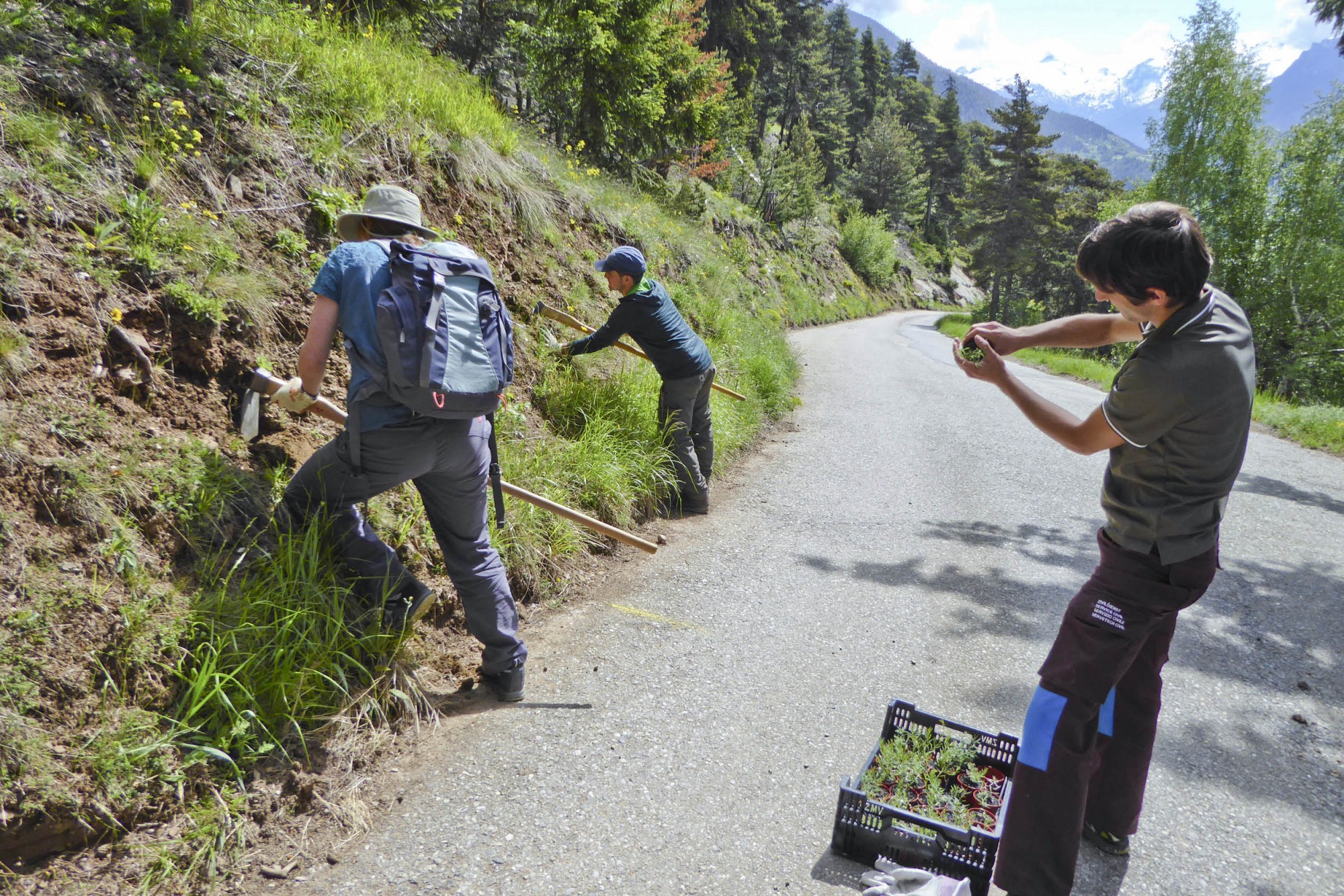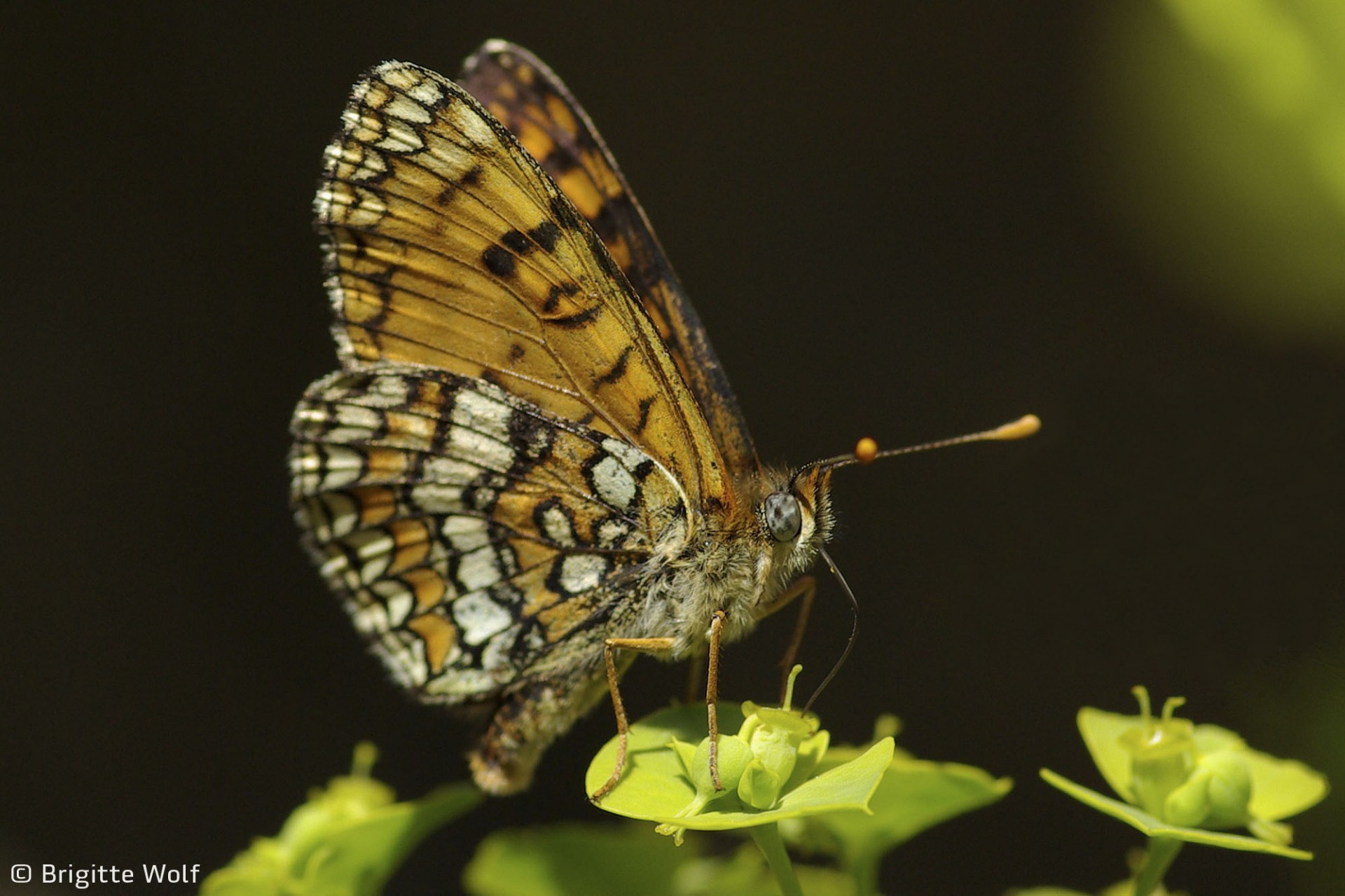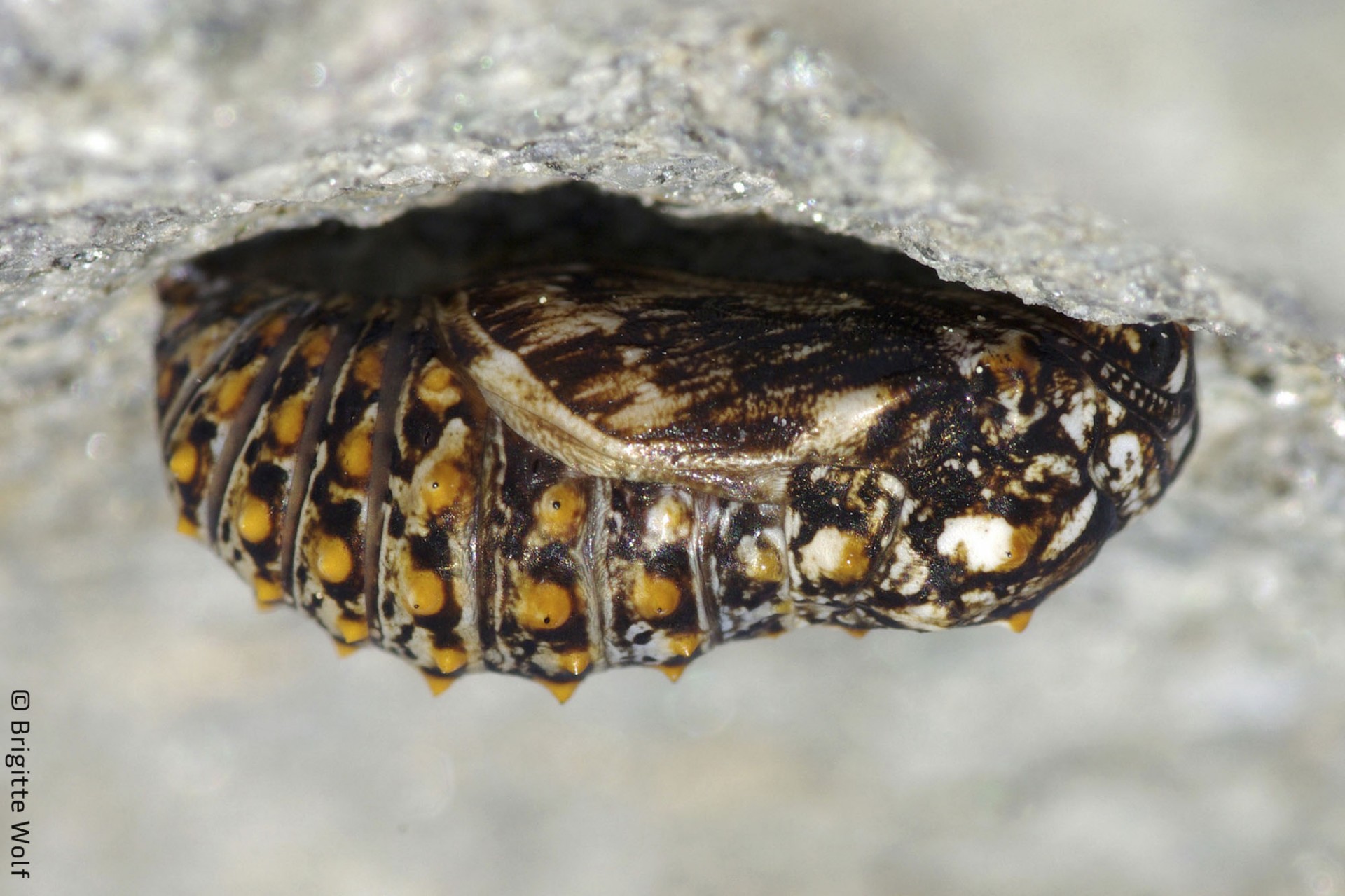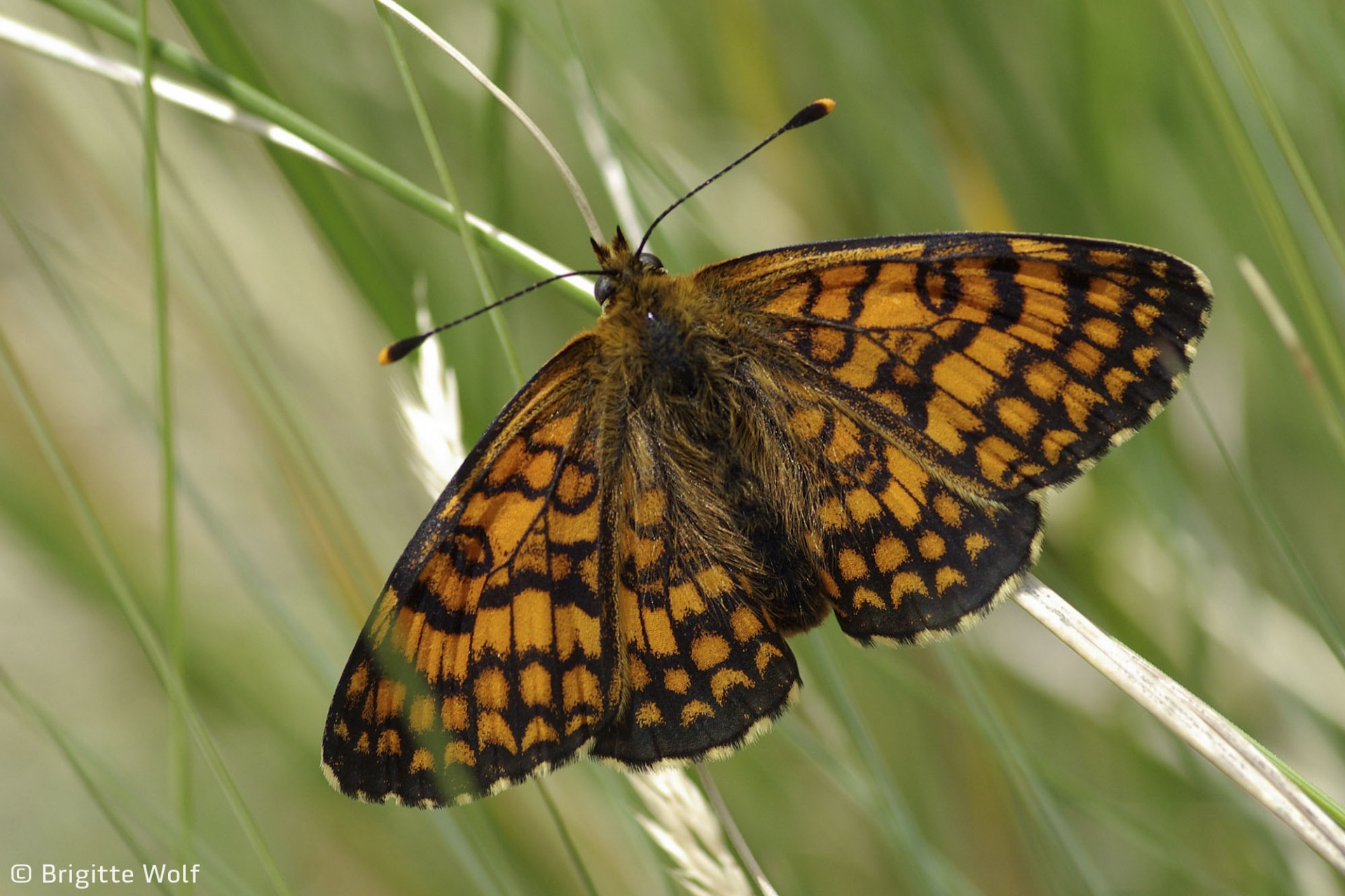Provençal Fritillary
The best opportunity to observe the Provençal Fritillary (Mellicta deione berisalii) is given on sunny days with little wind in June, near to the locality Ausserberg-Hohtenn of the Lötschberg southern ramp. It can be recognized due to its orange brown colour with black grid patterns. The butterfly prefers warm and dry climate. In Switzerland 11 Fritillary species are known, and all look quite similar. The caterpillar of the Provençal Fritillary is linked to its forage plant, the Italian Toadflax (Linaria angustissima). Both have their main distribution in the Mediterranean area, from where they immigrated into the Rhone Valley after the last Ice Age. A subspecies of the Provençal Fritillary is known only from the Valais, therefore it is considered as endemic in the Rhone Valley.
In the past, lots of terrains in the Upper Valais were ploughed, therefore the butterfly was found frequently. Since then it became rare. The reason is quite simple: The caterpillar’s feed is exclusively the leafs of the Italian Toadflax, growing on dry and frequently worked fields and in vineyards. It is an undesirable weed and where the plant get rare, also the butterfly gets rare.
Conservation Measures
The Bureau for Environment and Energy (buweg) has mapped in 2014 the distribution of the butterfly in the World Heritage Region. They have contributed to the knowledge of the life cycle of the rare Fritillary species. This study was the basis for the elaboration of recommendations for protection and restoration, to be implemented jointly with the farmers. In 2015, the entire perimeter of the project Provençal Fritillary could be included into the network project Ausserberg and consequently agreements for the extensive farming established. The same year a pilot action with volunteers was launched together with the mountain farmer Orlando Schmid. A beef pasture lied fallow near Ausserberg was turned over and 240 young plants of the Italian Toadflax were planted. The first project assessment showed very encouraging results.

The Management Centre aims at restoring potential habitats but also establishing for most of the sites land use agreements with the farmers in order to assure supplementary incentives to the existing direct payments.
More information:





